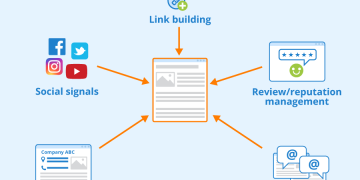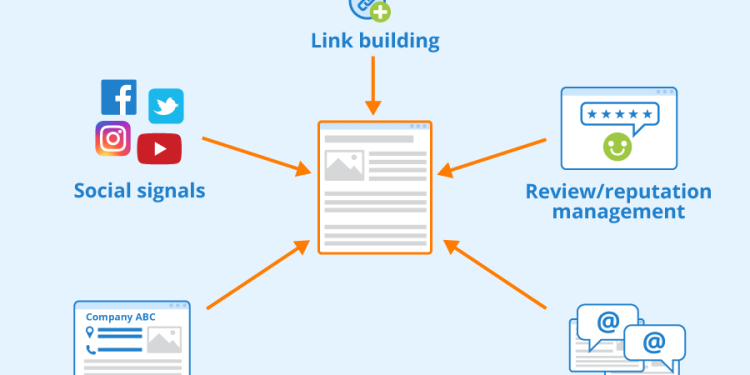How to Create a Successful Link-Building Strategy
Link building is one of the most important aspects of SEO. It refers to the process of acquiring backlinks, or incoming links from other websites, to your own. Backlinks are critical for improving your website’s authority, visibility, and search rankings. However, simply acquiring links is not enough; you need a strategic approach to ensure your link-building efforts are effective and sustainable.
In this article, we’ll explore how to create a successful link-building strategy, the types of SEO links you should focus on, and actionable steps you can take to build a solid backlink profile that boosts your site’s performance.
1. Understand the Importance of Backlinks
Backlinks serve as “votes of confidence” from other websites. When a reputable site links to your content, it signals to search engines that your website is trustworthy, authoritative, and relevant. Google and other search engines use backlinks as one of the key ranking factors in their algorithms.
The more high-quality backlinks you acquire, the more likely you are to rank higher for your target keywords. But not all backlinks are created equal. To maximize the effectiveness of your link-building strategy, it’s essential to focus on quality over quantity.
2. Define Your Link-Building Goals
Before diving into link-building tactics, it’s essential to define your goals. A clear understanding of what you hope to achieve will guide your efforts and help you measure success.
Common Link-Building Goals:
- Increase domain authority: Build high-quality links from authoritative websites to improve your site’s overall authority and search rankings.
- Boost organic traffic: Acquiring links from websites in your niche can help drive relevant traffic to your site.
- Enhance keyword rankings: Backlinks can help improve your rankings for target keywords by signaling to search engines that your content is valuable and trustworthy.
- Build relationships: Link-building can also be an opportunity to establish relationships with influencers, bloggers, and industry leaders.
3. Identify High-Quality Backlinks
The quality of the links you acquire is far more important than the sheer number of links. High-quality backlinks come from reputable websites that have a strong authority and a relevant audience. Here’s how to identify valuable backlinks:
- Relevance: The website linking to you should be related to your industry or niche. Relevant backlinks are more likely to pass on link equity and boost your SEO.
- Domain Authority: Links from websites with a high Domain Authority (DA) are more beneficial for SEO. These links signal trustworthiness and help improve your site’s own DA.
- Traffic: Links from websites that have consistent traffic and user engagement are valuable because they direct real, interested visitors to your website.
- Link Placement: Links placed within the content (rather than in the footer or sidebar) are seen as more valuable by search engines.
4. Types of Links to Focus On
There are several types of links you can acquire, and understanding which ones are most beneficial for your SEO optimization strategy is crucial. Here are some of the most effective types of SEO links:
a. Editorial Links
These are links placed within the body of content on other websites, typically from blog posts or articles. Editorial links are some of the most valuable because they are earned, not paid, and they provide relevant context to your content.
b. Guest Post Links
Guest blogging involves writing articles for other websites in exchange for a backlink to your site. This is an effective way to build relevant links and establish authority in your niche. Ensure that the website you’re guest posting on has a good reputation and a relevant audience.
c. Resource Page Links
Some websites maintain pages that list useful resources for their audience. Getting your website included on a relevant resource page can provide you with a high-quality backlink.
d. Directory Links
Submitting your site to reputable online directories can help build backlinks, especially for local SEO. Be selective about which directories you submit your site to, as low-quality directories can hurt your SEO.
e. Social Media Links
Although social media links are not as powerful as backlinks from other websites, they can still help increase visibility and drive traffic to your site. Social shares can also indirectly influence rankings by increasing engagement and generating backlinks from other sites.
5. Tactics for Building Backlinks
Now that you understand the types of links you should focus on, here are some effective link-building tactics to help you acquire high-quality backlinks:
a. Create High-Quality Content
The foundation of any successful link-building strategy is great content. If your content is valuable, informative, and engaging, others are more likely to link to it. Consider creating content that is:
- Highly informative: Articles, guides, and tutorials that answer common questions in your industry.
- Visually appealing: Infographics and videos that are easily shareable.
- Interactive: Tools, calculators, or quizzes that engage your audience.
- Research-based: Original studies, surveys, and data-driven reports that others may reference.
b. Outreach to Influencers and Bloggers
Reach out to influencers, bloggers, and industry leaders in your niche to promote your content or collaborate on projects. Many influencers are open to partnerships or collaborations that include backlinks. Personalize your outreach emails to make your pitch stand out.
c. Broken Link Building
Broken link building involves finding broken links on other websites and offering your content as a replacement. Use tools like Ahrefs or Broken Link Checker to identify dead links and reach out to webmasters with a suggestion for a relevant link on your site.
d. Conduct Link Reclamation
Link reclamation involves finding mentions of your brand or website across the web that don’t have a backlink, and then reaching out to the site owner to request a link. You can use tools like Google Alerts or BuzzSumo to track mentions and claim backlinks.
e. Participate in Online Communities
Join forums, online communities, and social media groups related to your industry. Participate in discussions and include links to your relevant content where appropriate. However, make sure to focus on adding value, not just self-promotion.
6. Monitor and Evaluate Your Backlink Profile
After implementing your link-building strategy, it’s essential to monitor your progress. Use tools like Google Search Console, Ahrefs, or SEMrush to track the growth of your backlink profile, identify new backlinks, and evaluate their quality. Regularly check for toxic backlinks that could negatively impact your SEO and use Google’s disavow tool if necessary.
7. Conclusion: Building a Strong Link-Building Strategy
A link-building strategy is crucial for improving your website’s SEO optimization and increasing its visibility in search results. By focusing on acquiring high-quality backlinks, using effective tactics, and consistently monitoring your progress, you can enhance your website’s authority, drive more organic traffic, and ultimately improve your rankings.
Remember, building backlinks is a long-term effort that requires patience and persistence. With the right approach, link-building can significantly contribute to your website’s success and growth. If you are working on seo optimization of the website for windshields, Start implementing these strategies today and watch your site climb the ranks!

























